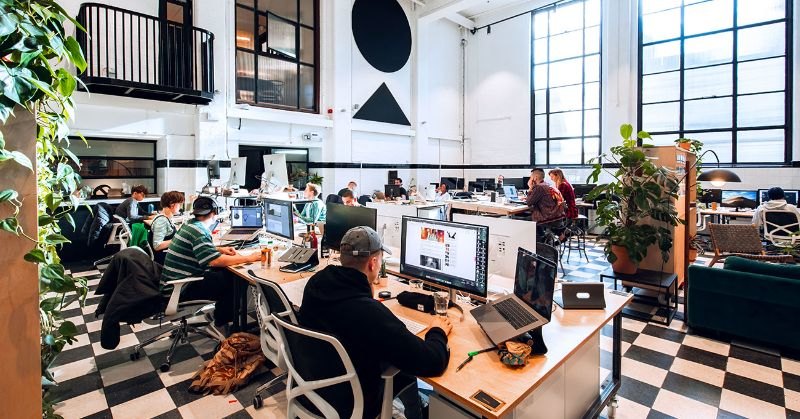Affordable luxury is no longer an oxymoron—it’s a viable business strategy. Through effective product sourcing, resellers and fashion entrepreneurs can access designer clothing at wholesale prices and build competitive online boutiques, from Shopify storefronts to Amazon and eBay marketplaces.

1. Why Designer Clothing Is a High-Demand Resale Opportunity
The global appetite for luxury fashion is growing. Consumers crave brand prestige but also look for savings. This shift has made affordable designer clothing a booming category in the resale market, with platforms like The RealReal, Poshmark, and eBay fueling demand.
For online sellers, tapping into this segment means:
High perceived value per item
Loyal customer bases for specific brands (e.g., Gucci, Prada, Burberry)
Strong resale profit margins—even from past-season or liquidation inventory
Unlike fast fashion, designer items often hold value over time, especially limited editions and classic staples. That’s why mastering ecommerce product sourcing in this space is key to building long-term profitability.
2. What Is Product Sourcing in the Designer Fashion Market?
In the context of luxury fashion, product sourcing refers to the practice of locating, negotiating, and securing high-end designer inventory from reliable channels—without paying retail or manufacturer suggested retail price (MSRP).
This can involve:
Buying overstock from luxury department stores
Partnering with product sourcing websites that specialize in liquidation
Using product sourcing agencies or freelance specialists to locate authentic pieces
Working with B2B sourcing platforms that have EU or US-based excess stock
It’s different from traditional retail buying. You’re not placing orders through showrooms or brand reps—instead, you’re leveraging non-traditional wholesale product sourcing strategies.
3. Top Methods for Sourcing Designer Clothing
There are several ways to secure authentic designer items at wholesale or near-wholesale prices:
Common Approaches:
Liquidation & Overstock Channels: These offer surplus merchandise from high-end retailers such as Saks Fifth Avenue, Nordstrom, or Neiman Marcus.
Product Sourcing Specialists: These individuals use their network to track down designer stock, authenticate it, and arrange import or domestic purchase.
Dropshipping Product Sourcing: Some suppliers (e.g., BrandsGateway) allow dropshipping of verified luxury products, but margins and brand control are limited.
Sourcing Agencies & Companies: You can hire a product sourcing company to handle negotiations, freight, and authentication.
Table 1: Comparison of Designer Fashion Sourcing Methods
| Sourcing Method | Upfront Cost | Scalability | Typical Margin |
|---|---|---|---|
| Liquidation Pallets | Medium | Medium | 40–70% |
| Sourcing Specialist | High | High | 50–80% |
| Dropshipping Supplier | Low | High | 15–30% |
| Direct from Manufacturer | High | High | 60–90% |
Each method has trade-offs. Liquidation offers higher risk but good margins. Dropshipping is lower barrier, but quality control is limited. A product sourcing agency often delivers the best mix of quality and profitability—at a premium.
4. Using Technology to Improve Luxury Product Sourcing
Digital tools now streamline how fashion businesses source products and manage supplier relationships. Whether you're building a curated designer collection or automating your inventory, there’s software for that.
Top Product Sourcing Tech:
Product Sourcing Apps:
Spocket: Accesses EU/US-based dropshipping suppliers
Syncee: Offers branded apparel integrations for Shopify
Modalyst: Includes luxury dropshipping partners like Dolce & Gabbana
Product Sourcing Software:
Inventory tracking with Oberlo (for legacy stores)
Product auto-import tools
Real-time pricing synchronization and automated order fulfillment
Tech tools reduce human error, automate reordering, and help manage multiple sourcing partners—especially useful in fast-moving eCommerce product sourcing workflows.
5. The Role of Product Sourcing Agencies & Specialists
If you're scaling a boutique or want access to restricted or hard-to-find designer brands, working with a product sourcing specialist or agency can save time and protect your reputation.
What They Do:
Vet and verify suppliers
Negotiate prices on your behalf
Assist with import/export processes
Help secure exclusive deals (e.g., end-of-season Chanel stock)
Boutique owners often rely on agencies to gain access to wholesale product sourcing pipelines in Italy, France, and the U.S., where designer overstock is more readily available.
Many specialists also help with authentication, packaging, and even photography for your site—transforming your operation from DIY to professionally curated.
Table 2: Top Global Product Sourcing Platforms for Designer Fashion
| Platform/Service | Product Types | B2B or B2C | Notable Features |
|---|---|---|---|
| BStock | Liquidation Designer | B2B | Auctions from major retailers |
| BrandsGateway | New/Outlet Luxury | B2B | Verified brand authenticity |
| Italic | Direct Manufacturer | B2C | Unbranded luxury quality |
| Faire | Boutique Fashion | B2B | Independent + designer blend |
These platforms form the foundation of modern product sourcing websites—designed for small to mid-sized sellers to compete with major retailers in the affordable luxury market.
6. Product Development Sourcing for White-Label Luxury Fashion
What if you want to build your own “designer-style” brand without relying on existing labels?
That’s where product development sourcing comes in.
You can:
Partner with textile manufacturers in Italy, Turkey, or China
Create proprietary designs and have them produced in limited runs
Sell your label with high-end aesthetics at lower price points
These white-label approaches combine the product sourcing mindset with fashion entrepreneurship. Platforms like Alibaba, Maker’s Row, or Teg specialize in connecting designers to ethical, high-end garment factories.
7. Compliance and Authenticity: Avoiding Fake Designer Goods
Luxury fashion comes with risks. Counterfeit goods can ruin your brand—and bring legal consequences.
Tips to Stay Safe:
Work only with vetted product sourcing companies or authorized liquidation agents
Use third-party services like Entrupy to verify item authenticity
Avoid sellers offering “too-good-to-be-true” pricing with no invoice or origin proof
Request sample batches and check tags, holograms, stitching, and packaging
When in doubt, involve a product sourcing specialist with brand-specific knowledge.
FAQ: Frequently Asked Questions
Q1: Can I legally resell designer items sourced from liquidation?
A1: Yes, as long as the items are genuine and obtained through authorized liquidation partners. Always verify authenticity and keep purchase documentation.
Q2: What’s the best product sourcing app for luxury fashion?
A2: BrandsGateway and Spocket are top-rated for sourcing high-end clothing via dropshipping or wholesale models.
Q3: Is dropshipping luxury fashion profitable?
A3: Margins are usually smaller (15–30%), but it’s a low-risk way to test demand or build an audience before investing in inventory.
Q4: How do I authenticate items I source online?
A4: Use platforms like Entrupy, work with specialist agencies, or request brand certification when available.
Q5: Are product sourcing agencies worth the cost for small businesses?
A5: For those serious about entering the luxury market, a sourcing agency can provide access, save time, and prevent costly mistakes.
Conclusion
Selling luxury designer clothing doesn’t require a celebrity budget or a fashion license. With the right approach to product sourcing, even solo entrepreneurs can build high-margin, affordable luxury brands.
Whether you use product sourcing software, work with a specialist, or tap into dropshipping product sourcing, the tools are available—and the demand is high.
Now’s the time to source smarter, sell luxury, and unlock your own corner of the fashion economy.



